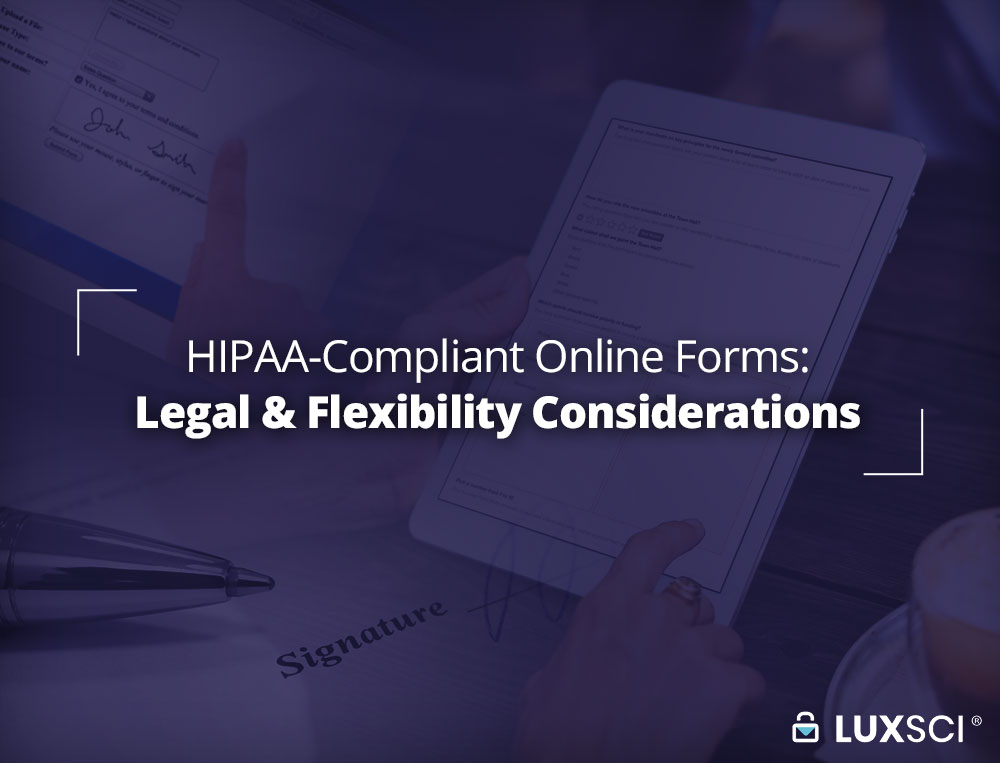Streamline Operations by Transitioning to Digital Forms
Tuesday, May 31st, 2022Most healthcare organizations are pursuing digital transformation, but many providers are still reliant on paper forms that need to be printed out, scanned, filed, and securely stored. Shifting to a digital system can streamline operational processes and save time, money, and effort.
Why Transition to Digital Forms
There are several reasons to switch to online forms. These include:
- Having a single, verified source of patient information
- Making workplace operations more efficient
- Streamlining tasks such as appointment booking and generating referrals
- Minimizing spam and other issues that come from using email
- Enhancing data management processes
- Cutting back on paper usage and reducing physical secure storage space
Paper forms are easily stolen, destroyed, misplaced, or damaged. A secured digital system saves time and strengthens the organization’s data security posture.
Improve the Patient Check-In Process
Almost every time a patient visits a doctor’s office, they must fill out paper forms. The time the patient spends filling out these forms could be better spent interacting with their health care provider. In addition, the front office staff must organize, file, and store these never-ending documents. Sometimes these forms are scanned and digitally filed.
Why not cut out the extra step and require patients to submit these forms digitally? Before the patient’s appointment, they could fill out and submit these forms in the patient portal. Providers could also use iPads or tablets to have patients digitally submit forms in the office.
This improves efficiency and data management processes while enabling staff to focus on what matters most- providing excellent medical care.
Integrate Digital Forms with Electronic Records
Another benefit of digitizing paper forms is that it is easier to integrate with existing electronic records systems. Using a digital form solution that connects to systems via APIs (like LuxSci’s Secure Form) allows organizations to upload their form data to a secure database. In addition, look for digital form solutions that can be configured to send or save form data wherever the organization designates. Flexibility helps preserve existing workflows and meet documentation requirements.
For example, an organization may utilize multiple online forms that require different storage workflows. Contact forms may be sent to an email inbox for follow-up by office staff, while patient forms should be sent to a secure database or added directly to a patient’s file. Using a flexible digital form streamlines processes for office staff.
LuxSci’s Secure Form lets organizations send data to email addresses, databases, file storage, SFTP, or any webhook-enabled place like Slack. No special software or web hosting changes are required to use it. The Secure Form service turns complex data collection into a simple process.
Ink Signatures
If the paper forms are legal documents, like medical information releases, they should have signature capabilities. Ink signatures enable form users to submit handwritten signatures with a web form. Ink signatures are more legally binding because they prove the user’s identity and intention.
Accordingly, LuxSci’s Secure Form has ink signature capabilities that do not require additional software to install. They are easy for users as well. All they have to do is draw their signatures in the box with their mouse, a stylus, or finger.
The signature is saved as an image file that can be easily stored and secured. See Web Form Signatures: Fast, Easy Method of Informed Consent for more information on ink signatures.
Conclusion
There is no reason to continue using paper forms in today’s digitally enabled world. Transitioning to digital forms improves operational efficiency and data management practices. Interested in getting started? LuxSci’s Secure Form offers the security and flexibility to manage patient-submitted data.






